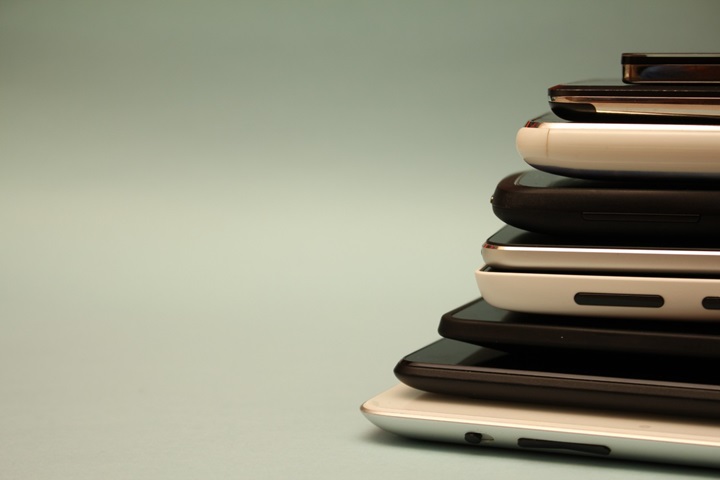Kantar’s Global OS study uncovers the following behaviors within the Smartphone market between September to December 2022:
- Google Pixel secures a record global sales quarter
- Between September to December 2022, Smartphone ownership grew by +2% which saw Q4 round off a challenging year for the industry
- Apple’s iOS is the standout performer in Q4, experiencing strong sales growth across all markets
- iPhone 14 Pro’s success evidences that consumers are willing to pay more for the Pro variant
- Android remains the leading OS across the European 5, boasting a 70% sales share
- Samsung’s budget Galaxy A13 remains the top selling model across the European 5, reflecting consumers’ appetite for low-cost devices

Apple’s iOS is the global standout performer in Q4
Apple’s iOS grew its sales share across all markets in Q4 vs the previous year. In European 5 (France, Germany, Italy, Spain, and Great Britain) (+2ppt), with marked expansion in both Italy (+5ppt) and Spain (+4ppt).
Growth was also achieved in the US (+2ppt), Australia and Japan (+1ppt). Share remained flat in Mainland China.
iPhone 14 Pro’s success is evidence that consumers are willing to pay more for Pro variant
Three months of iPhone 14 sales data indicates a strong performance for the Pro variants, outperforming the base models in several markets. Apple’s decision to further distinguish the Pro range, by keeping features such as the new A16 Bionic processor and Dynamic Island exclusive to the Pro, appears to have paid off. Encouraging consumers to opt for the pricier device will help drive further value, with consumers paying 25% more for the Pro variant. In an industry where consumers are hungry for innovation, the Pro’s success evidences that they are willing to pay for it.
Android remains the top global OS
Android remains the leading OS across the European 5, boasting a 70% sales share (-2ppt) v the previous year. Performance has been equally challenging in the US (-2ppt), Australia (-1ppt) and Japan (-1ppt).
Mainland China proves the exception (+1ppt), benefiting from customer migration away from Huawei’s Harmony OS.
Google Pixel secures a record global sales quarter
Google continues to build on the success of its Pixel series, securing a record sales quarter across the European 5, US, Australia, and Japan. Share is highest in Great Britain, securing 18% of all Android device sales. Its efforts and investment in expanding device ranging appears to be paying dividends. The recently launched mid-tier A Series is proving especially popular. A compelling trade-in scheme has also contributed to the success, one in 10 Pixel buyers state that they were influenced to purchase by a trade-in offer (+285 over-index vs all Smartphone buyers in the same period).

Samsung’s budget Galaxy A13 remains top seller in Europe
Samsung’s budget Galaxy A13 remains the top selling model across the European 5, reflecting consumers’ appetite for low-cost devices as wallets continue to be squeezed. The device’s successor, the A14, was recently revealed at The Consumer Electronics Show in Vegas and made headlines with the promise of four years of security updates, virtually unheard of for the price.
Mobile World Conference Announcements
MWC 2023 kicks off on February 27th and will welcome a new generation of devices for many of the top manufacturers. Expect to see key announcements from Xiaomi, HMD Nokia, Honor and Realme. Following on from CES in January, there will likely be a heightened focus on Android satellite connectivity, powerful mid-tier devices and broad display of foldable technology.
Samsung unveiled the latest S23 series at their own Galaxy Unpacked on February 1st, again reaffirming its position as the top Android manufacturer. Weathering challenging profit margins in Q4, it will put a greater emphasis on premium devices in 2023. Foldables also remain a key strategic pillar. As competitors continue to launch and refine their own foldable ranges, the market is poised for an exciting year. Oppo’s latest foldable, the Find N2, has proven particularly popular amongst reviewers. Motorola is set to release the latest iteration of the Razr.
Whilst consumers are not stuck for choice, demand remains another question
However, these announcements come at a difficult time. Kantar Worldpanel ComTech interviewed 121,700 panelists about how the rising cost of living was going to affect their spending on their next Smartphone. Globally, 18% of consumers state that they intend to spend less than they originally planned. More concerning still, 15% state that they plan on delaying or cancelling their purchase altogether.
Despite the stormy climate, manufacturers can still succeed in enticing consumers to buy. Technology innovations that appear minimal compared to the previous year are innovative when compared to devices that most consumers own. Remember, many consumers are now opting to keep hold of their device for 4+ years. Manufacturers, retailers, and network providers should look to previous customer behavior when optimizing their strategies.
Increasingly, buyers are turning to promotions, bundles, and trade-in schemes to seek value. Finance is also proving popular, with Buy Now Pay Later services gaining traction in 2022. In the US, which has the greatest proportion of consumers paying for their phones on finance, PayPal’s Pay in 4 is the most popular service. Furthermore, refurbished devices are in growth, allowing consumers to own a Flagship device at Mid-Tier spend. As younger, sustainably lead consumers begin to enter the market, they are set to grow further still.
Finally, a clear omnichannel strategy is important in the post-Covid world. More consumers are opting to purchase their Smartphone online than before the pandemic, citing ‘lowest price/best value offering’ and ‘faster delivery’. It is integral that traditional brick and mortar retailers bolster their online offering, whilst enhancing their physical store experience. There is no reason that best prices and speed should be exclusive to online transactions, there is a risk that consumers are beginning to believe that they are.


